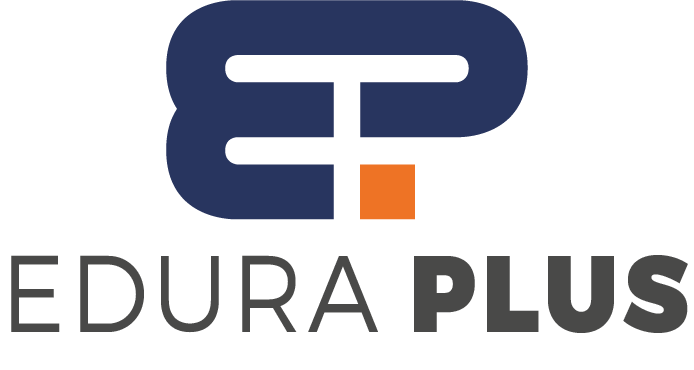Online based learning has lately been a great tool for parents trying to augment their children’s education. Children who have the freedom to learn from home can access a great range of disciplines, therefore improving their academic experience in ways that conventional classrooms would not always offer. If you’re thinking about online learning for your child, be sure to investigate several tools and ideas that can help to make the process more successful and interesting.
Why is Online Learning for Students Beneficial?
There are various benefits of online learning that will enable kids to shine academically. Flexibility is among the most clear advantages. Children can learn at their own speed, which lets them spend more time on difficult subjects and advance rapidly through previously known regions.
Furthermore, learning online for students usually gives access to a broad spectrum of resources including interactive courses, movies, and tests that might not be available in conventional environments.
The capacity to customize the educational process is still more advantages. Online learning environments let students pursue customized learning paths fit for their particular requirements. Children with particular learning styles or those who might require more aid may notably benefit from this.
Best Online Learning Platforms for Kids
These days, there are several internet learning environments accessible, each suited for a different age range and educational requirement. Parents should investigate the following a few internet learning resources:
-
Complete Learning Systems
Many systems provide courses in a range of disciplines, including math, physics, history, and more. These sites offer a set course with classes building on one another. To keep kids involved and track their development, some additionally offer video lessons, tests, and games. Reports let parents track their child’s development and help them to spot areas that might call additional attention.
-
Tools for Learning Language
Some systems use gamified and interactive lessons to make learning enjoyable and interesting for kids picking new languages. Many times, these devices have incentives systems whereby kids get points or badges for finishing assignments. Including games makes learning more fun and helps children remember material while developing their basic language abilities. Many systems also let children improve their fluency by practicing pronunciation and having conversations with native speakers.
-
Early Reference Products
Platforms emphasizing fundamental abilities such reading, arithmetic, and basic science will help younger students. Many times, these sites offer entertaining, colorful lectures meant to grab young students’ interest. Early on, interactive activities include puzzles, matching games, and films let kids explore fundamental ideas in an interesting, hands-on manner, therefore enhancing their enjoyment of learning. Building a strong educational basis depends primarily on such Products.
-
Advanced Learning Platforms
Older students or those wishing to challenge themselves would find such platforms perfect since they include more advanced courses in fields including coding, robotics, and business. Many times include projects and hands-on activities, these sites let children apply their knowledge in practical settings. Through challenging subjects, children can hone critical thinking and problem-solving abilities that can benefit them in next academic and career paths.
How to Select the Correct Online Learning Program
The sheer volume of choices accessible in online learning programs makes choosing one daunting. Here are some factors to weigh while choosing an online learning environment:
1. Appropriateness for Age
Make sure the platform presents Products appropriate for your child’s age and degree of learning. Many systems classify their courses based on grade levels or age groupings, which helps parents locate the proper match more quickly. Selecting a program that pushes your child without overloading them can help them to develop confidence and drive.
2. Alignment of Curriculum
Search for sites that complement the course of instruction in your child’s school. This guarantees they are covering the same ground and won’t lag behind in their homework. If you are using online learning as a complement to conventional education, especially helpful are online resources consistent with accepted educational standards. Maintaining consistency helps children to reinforce what they acquire in the classroom and benefit from the additional freedom of online learning.
3. Interactive Tools
Children generally prefer interactive education including films, quizzes, and games to be more interesting. Select platforms to keep your child inspired that provide these components. Particularly gamified courses help to make the procedure seem more like a fun challenge than a drudgery. These interactive tools improve information retention and keep kids engaged in their education, therefore enabling them better absorption of the content.
4. Learn online Free
Many internet learning sites provide free learning chances if you’re seeking reasonably priced solutions. These sites let students free, free online learning free without financial obligation. Many free apps provide excellent training and products, which can be quite helpful even if some of them can have restrictions on advanced functionality. Parents who wish to test the waters of online learning before committing to a commercial platform may find free resources to be quite a good choice.
5. Review and Rating Systems
Before pledging to a platform, always read ratings and reviews. Many times, parents and teachers use these sites to discuss their experiences, thus providing you with knowledge on what works best. Search for sites with positive comments on their degree of support, simplicity of use, and content quality. Reviews can offer insightful direction and help you stay away from possibly less successful or interesting platforms.
Constructing a Productive Learning Environment
Kids’ internet learning effectiveness depends much on their physical surroundings. These suggestions will help you establish a perfect learning environment:
-
Choose a Quiet Space
Create a specific space free from distractions like TV or noisy siblings. Children find it easier to concentrate in a calm, properly lighted environment during lessons. Make sure the area is pleasant with suitable furniture, a desk and a chair. The perfect arrangement will allow your child to work uninterrupted, therefore supporting their concentration and involvement with their courses.
-
Restrict Screen Time
Although online learning is quite significant, screen time should be balanced. Promote breaks to prevent tiredness and to keep concentration. Regular breaks let kids relax their eyes, elongate their bodies, and digest the knowledge they have gained. Managing screen time guarantees children remain fresh and ready to study when they go back to their classes and helps prevent burnout.
-
Use Instruments for Engagement
Add books, puzzles, or even practical experiments to augment online courses if at all possible. This serves to reinforce ideas in several ways. By means of hands-on learning such as making or creating models, hands-on education can improve knowledge and provide concrete form for abstract ideas. Interactive activities can also help kids to explore themes in an original and memorable manner, therefore bringing subjects to life.
Advice for Parents Helping Their Children Online Learners
Ensuring your child’s success with online learning depends critically on you as a parent. These doable suggestions will enable your youngster to flourish in the virtual classroom:
1. Provide a Routine
Set a regular schedule for online study, much as with a conventional school day. Consistency enables children to develop positive behaviors and keep on target. Establishing a schedule gives youngsters structure and helps them properly allocate their time, therefore facilitating their balance of schooling with other interests. For younger students especially, routines also foster security, which is vital.
2. Track Advancement
Visit your child often to remain involved. Go over finished projects, provide encouragement, and point up areas that might want work. Monitoring your child’s development will help you remain aware of their strengths and shortcomings, thereby guiding your support of them. It also promotes honest communication so your youngster feels free to seek assistance while facing challenges.
3. Foster Independence
Help your youngster to assume responsibility for their education. Support their goal-setting and tracking of development. This increases self-confidence and makes one accountable. Encouragement of youngsters to be autonomous learners helps them to acquire resilience and problem-solving abilities, which will help them in all spheres of life. Give children the tools and freedom to pick their own speed of learning; they will be proud of their achievements.
4. Emotional Support
Children may find learning online to be isolated. Offer emotional support; mark achievements; and be present to help them negotiate challenging courses. Children who receive emotional support remain motivated and are reminded that learning is a process with both accomplishments and obstacles. Being emotionally present helps your child know you are available to help them at every stage.
5. Be Patient
Online learning can provide difficulties, so one should be patient. Help your youngster if they find difficulty; try not to take control. Invite children to independently seek answers and ask questions. Children who possess patience might grow to be tenacious and have a growth attitude. It also helps your youngster see failures as teaching moments instead of roadblocks, therefore lowering their anxiety.
Final Thought
For children, online learning presents great chances to learn, develop, and investigate new disciplines in a flexible and interesting environment. Choosing the correct platforms, organizing a conducive learning environment, and helping your child along their academic path will help to guarantee that their online learning experience is both successful and fun. There are a lot of products available to assist your child to achieve whether your search is for interactive quizzes, instructional films, or even free online courses. Following these guidelines can help parents design a favorable educational environment that promotes lifetime learning and a passion for education.









